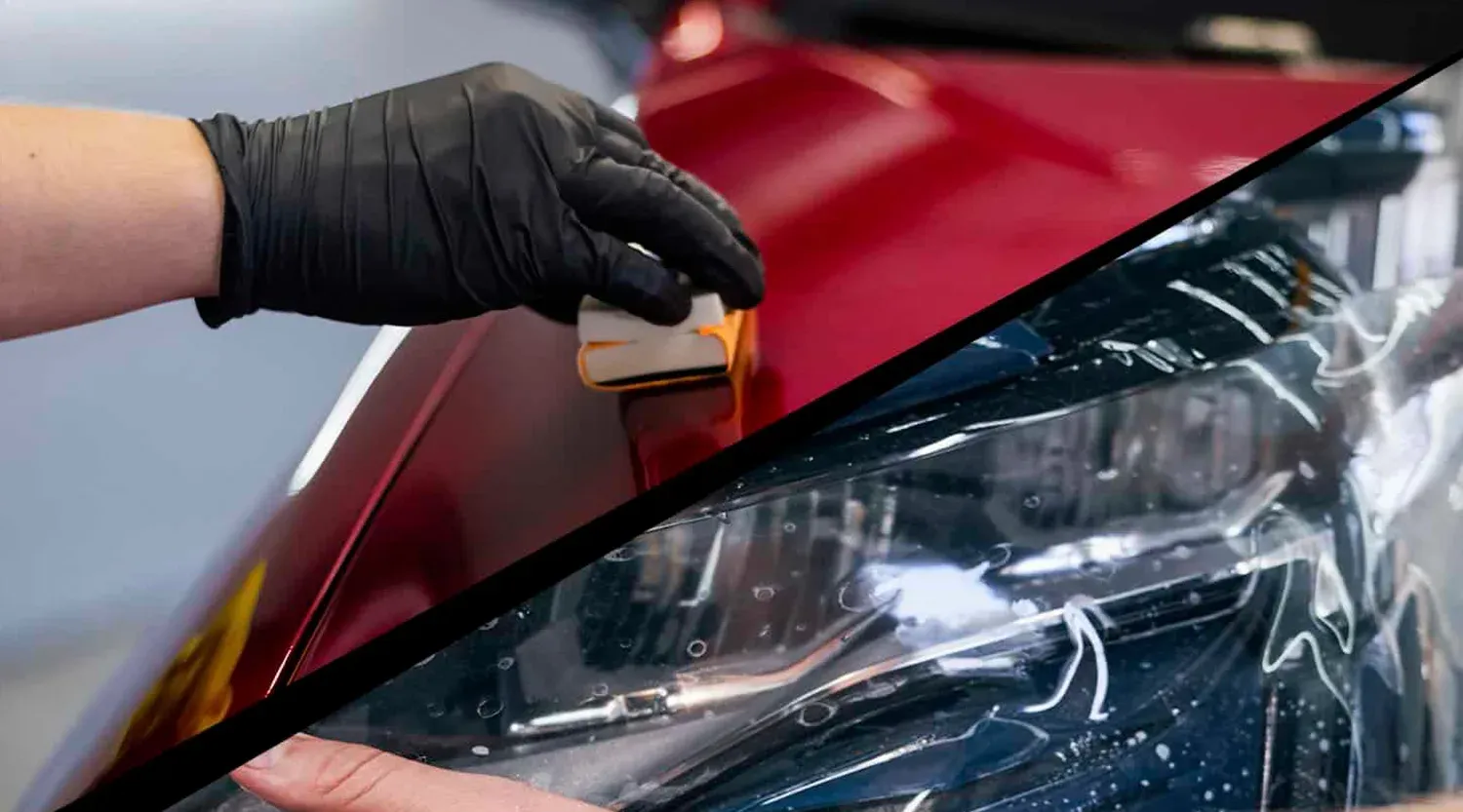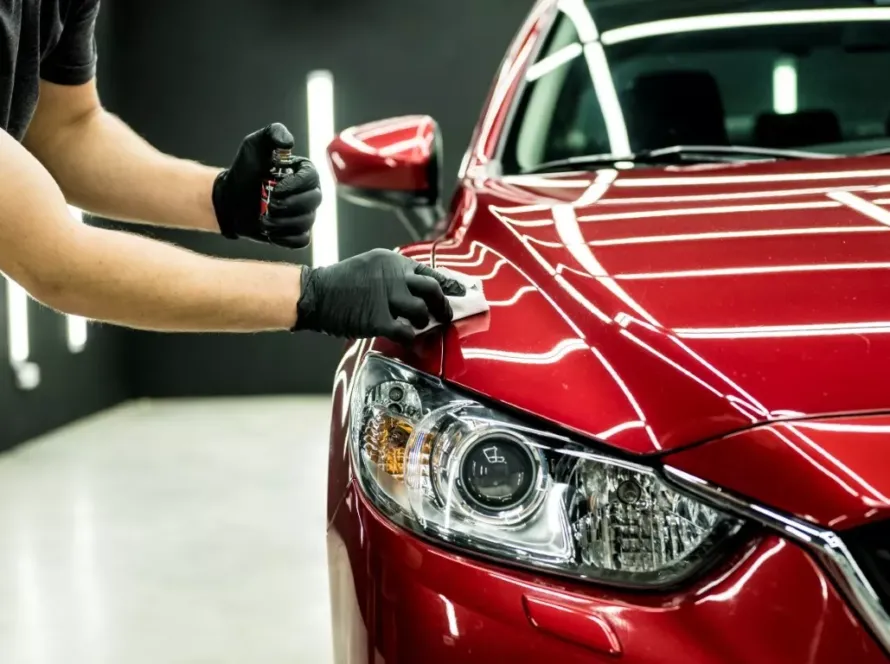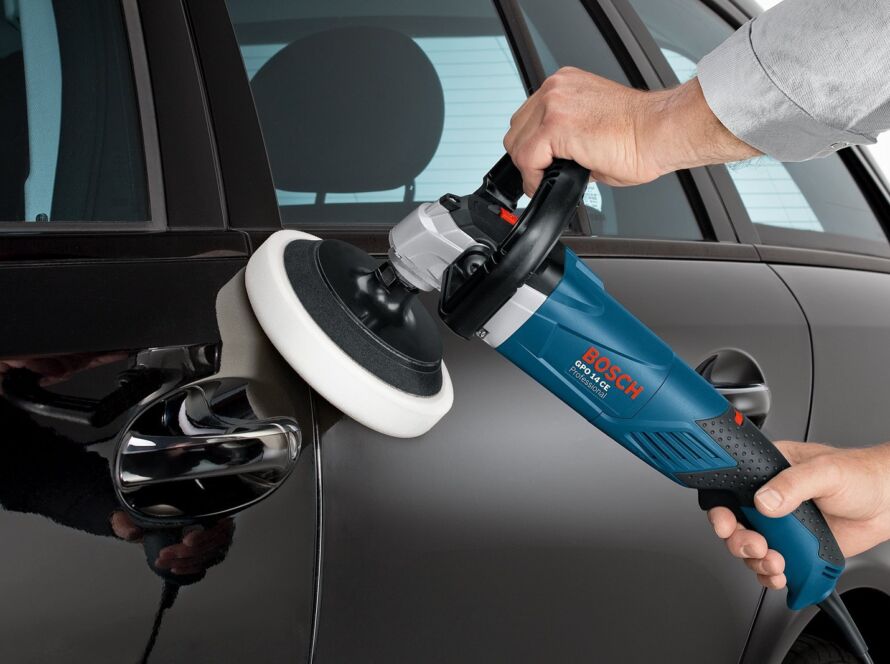Paint Protection Film vs Ceramic Coating: Which Should You Choose?
When it comes to protecting your car’s paint, two of the most advanced options are paint protection film (PPF) and ceramic coating. Both offer unique benefits, but they serve different purposes. Deciding between them depends on your driving habits, budget, and priorities.
A 2023 industry report revealed that nearly half of new car buyers invest in either PPF or ceramic coating within the first year of ownership, reflecting the growing importance of paint protection.
What Is Paint Protection Film (PPF)?
PPF is a transparent urethane film that physically shields paint from chips, scratches, and abrasions.
- Strengths: Absorbs rock chips, prevents scratches, self-healing properties.
- Durability: 5–10 years.
- Limitations: Higher upfront cost, less gloss than ceramic coating.
What Is Ceramic Coating?
Ceramic coating is a liquid polymer that bonds with the clear coat, creating a hydrophobic, glossy, and UV-resistant surface.
- Strengths: Long-lasting shine, easier cleaning, chemical resistance.
- Durability: 2–5 years.
- Limitations: Does not protect against rock chips or physical damage.
Key Differences Between PPF and Ceramic Coating
| Feature | Paint Protection Film (PPF) | Ceramic Coating |
| Protection Type | Physical impact protection | Chemical & UV resistance |
| Durability | 5–10 years | 2–5 years |
| Appearance | Invisible, less gloss | Glossy, hydrophobic finish |
| Cost | $1,000–$5,000+ | $500–$2,000 |
| Maintenance | Normal washes | Easier washing, less dirt |
Which Is Right for You?
- Choose PPF if: You drive on highways often, live in areas with lots of gravel/salt, or want maximum physical protection.
- Choose Ceramic Coating if: You want long-term gloss, chemical resistance, and easier maintenance at a lower upfront cost.
- Choose Both if: You want full-spectrum protection — PPF for impact-prone areas (bumper, hood, fenders) and ceramic coating on top for enhanced gloss and hydrophobicity.
Final Thoughts
The PPF vs ceramic coating debate doesn’t have a one-size-fits-all answer. PPF is unbeatable for physical protection, while ceramic coating shines in gloss and chemical resistance. For drivers who want the best of both worlds, combining the two creates unmatched protection and aesthetics.
Frequently Asked Questions (FAQ)
Which protects better, PPF or ceramic coating?
PPF protects against rock chips and scratches, while ceramic coating protects against UV, chemicals, and oxidation.
Can I use both PPF and ceramic coating?
Yes. Many detailers apply ceramic coating over PPF for combined benefits.
How long does PPF last compared to ceramic coating?
PPF lasts 5–10 years, while ceramic coating lasts 2–5 years.
Is PPF more expensive than ceramic coating?
Yes. PPF typically costs $1,000–$5,000+, while ceramic coating costs $500–$2,000.
Does ceramic coating stop rock chips?
No. Only PPF offers physical impact protection.
Which looks better, PPF or ceramic coating?
Ceramic coating delivers a deeper gloss, while PPF is almost invisible.
Can PPF self-heal scratches?
Yes. Modern PPF films self-heal under heat (sunlight or warm water).
Is ceramic coating permanent?
No. It’s semi-permanent but requires reapplication after a few years.
Which adds more resale value?
Both. PPF protects paint condition, while ceramic coating enhances appearance.
Which is easier to maintain?
Ceramic coating is easier to wash and maintain due to its hydrophobic properties.




